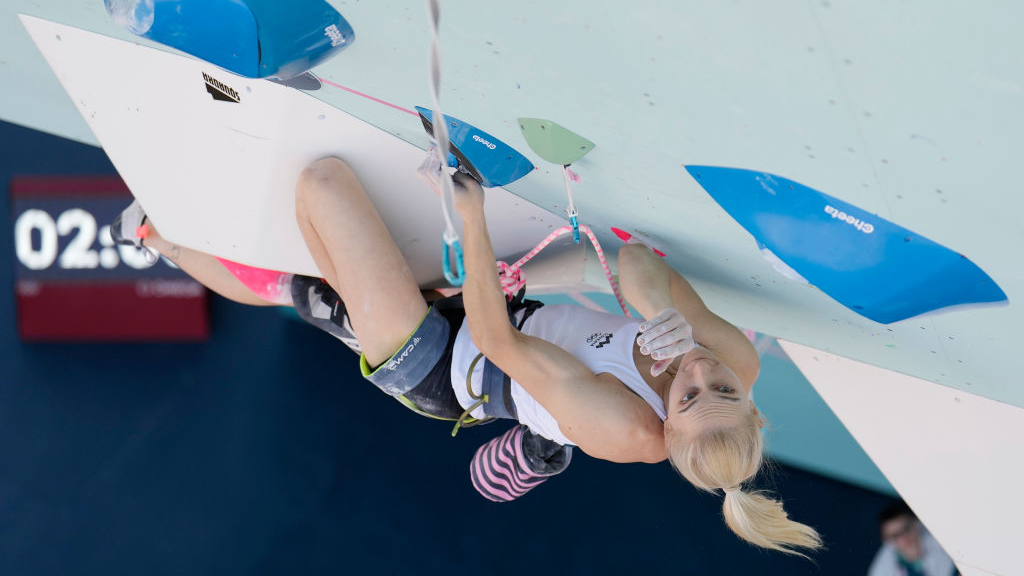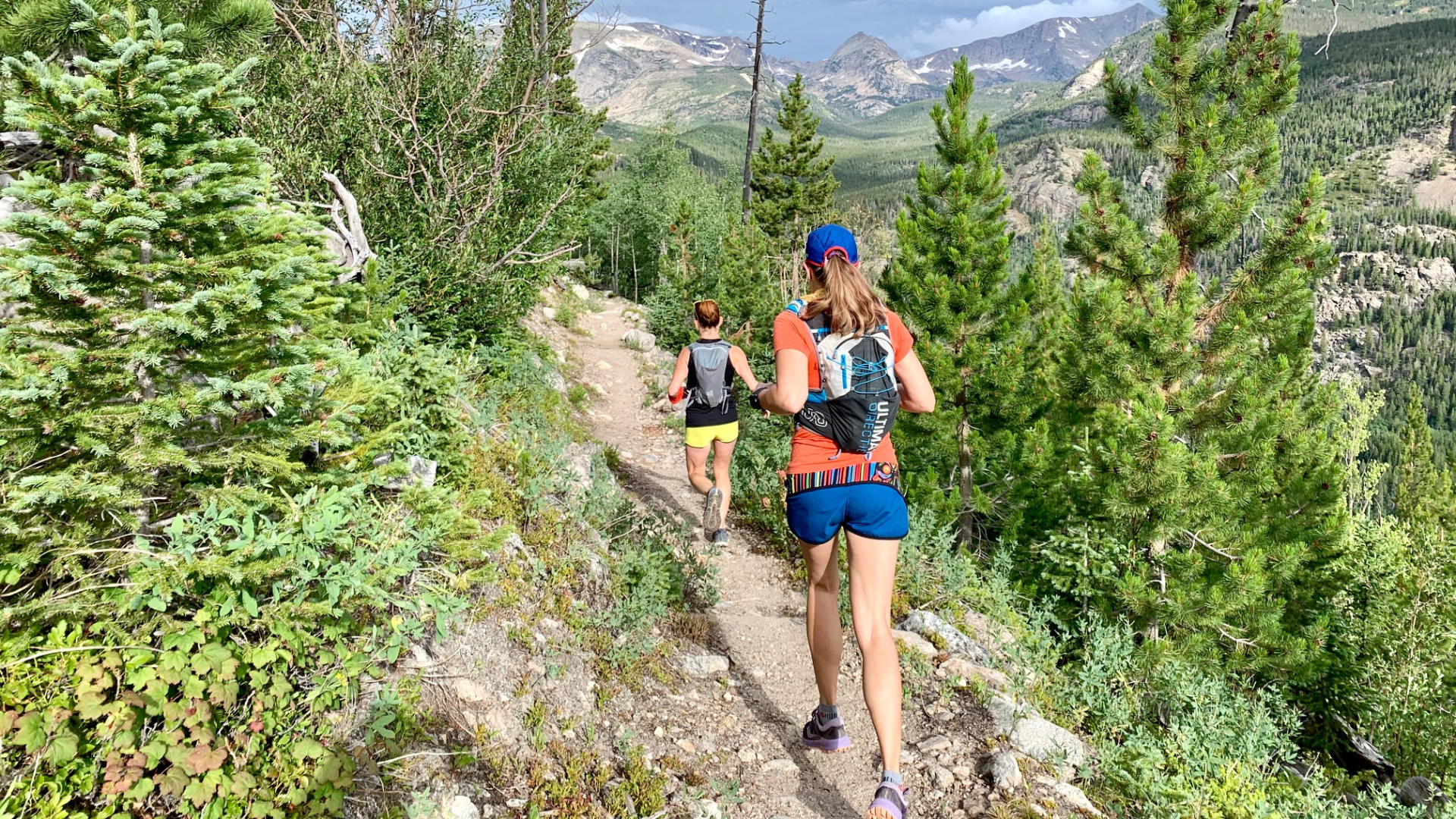
Running is fundamentally a very simple sport, but it comes with a whole host of specialized terminology that can be bewildering it you're lacing up your shoes for the first time. That's why we've put together this guide to help you understand some of the most common jargon you'll come across.
This isn't an exhaustive guide, and we'll be adding to it in future, but it gives you a good grounding in the basics if you're not sure about the difference between ultras and underpronation, or gun time and ground contact.
Training
We'll start with training terminology. It's easy to get stuck in a rut always doing the same training run at the same pace, but there are lots of different training techniques you can use to mix things up, and improve your speed and stamina. Here are some of the fundamentals. It's also useful to know some of the terminology associated with athletic performance.
Base run: a medium distance run completed at a comfortable pace. The actual distance and pace will depend on your fitness level and your goals.
Tempo / threshold run: a faster mid-distance run that feels 'comfortably hard'.
Interval training: a type of training that involves short periods of high-intensity work (such as sprints or hill runs) with periods of lower intensity effort.
Fartlek: a Swedish term meaning 'speed play', this is a type of interval training that's less regimented, and involves having fun by varying your pace on the fly.
Advnture Newsletter
All the latest inspiration, tips and guides to help you plan your next Advnture!
Recovery run: a very gentle run, usually the day after a race.
VO2 Max: the maximum volume of oxygen your body can use per minute during exercise.
Lactate threshold: as your exercise, your body produces a substance called lactic acid, or lactate. The lactic threshold is the intensity of exercise at which lactate starts to build up faster than it can be removed.
Running power: how much energy you actually exert while running.
RPE: rate of perceived exertion, or how hard a training session felt subjectively.
DOMS: delayed onset muscle soreness (see what is delayed onset muscle soreness).
Running dynamics
Running dynamics are the way your body moves as you run. You might not think about it much at first, but as you start to improve it becomes increasingly useful to understand. These are metrics that can be measured using a device containing an accelerometer that attaches to your body or clothing (like one of the best GPS watches).
Cadence: the number of steps you take per minute.
Stride length: the distance you cover with each step.
Vertical oscillation: how far upwards your body bounces while running.
Ground contact time: how long each of your feet is touching the ground between steps.
Events
While an event can be any distance (10 mile and 15 kilometer races are also quite common), these are the most common options. Running uses a hodgepodge of metric and imperial measurements, and races can be hilly or flat on any type of terrain, at night or during the day. Fancy a new challenge? See our list of the world's best marathons.
Ultra-marathon (or ultra): a race over 26.2 miles
Marathon: a 26.2 mile race, allegedly the distance between the battlefield of Marathon and Athens, which Greek messenger Pheidippides is said to have run to announce that the Persian army had been defeated.
Half marathon: a 13.1 mile race.
10k: a 10-kilometer race
5k: a five-kilometer race
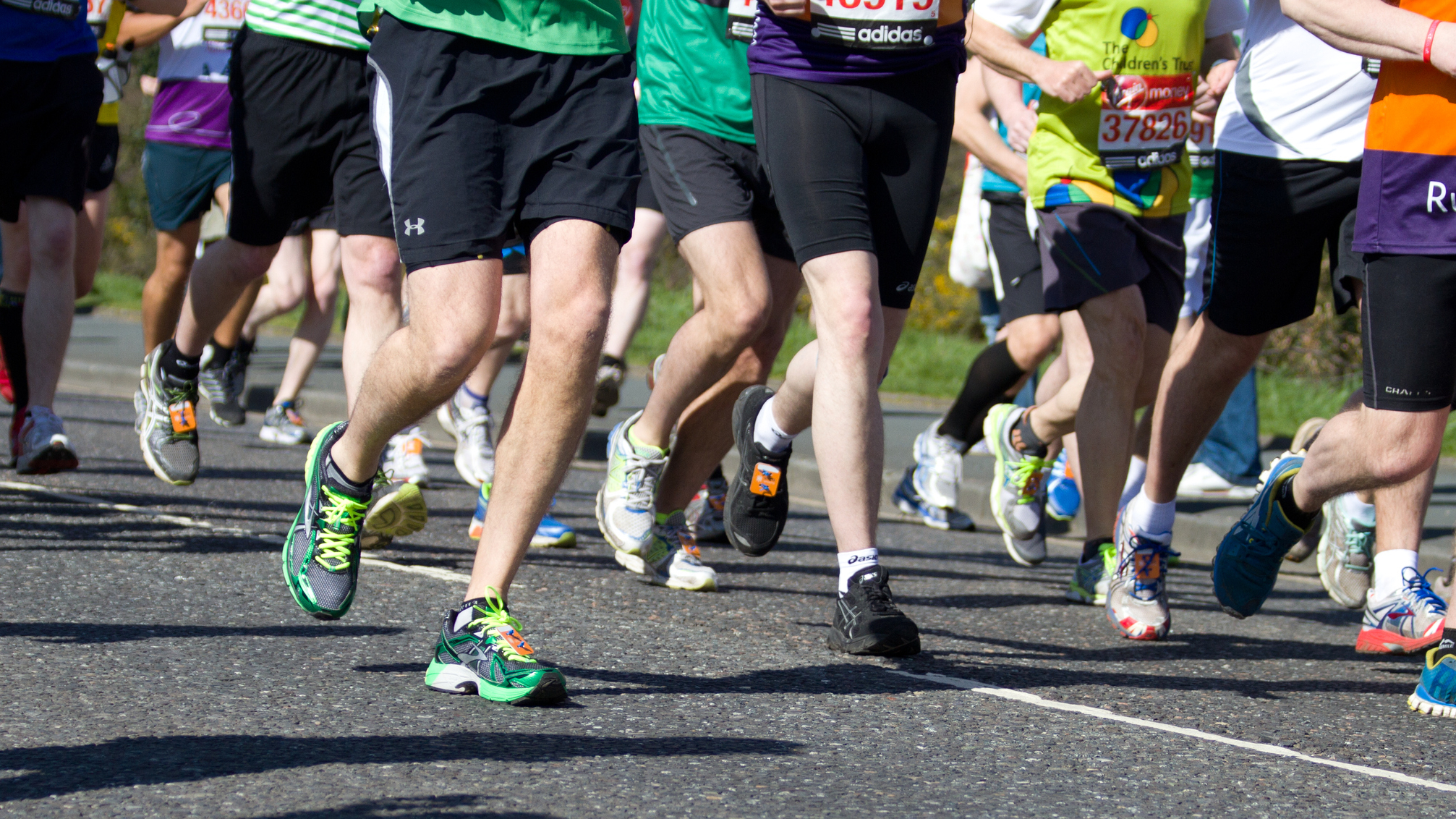
Race days
Races are usually pretty simple, but they also come with their own batch of jargon that might be confusing the first time round, particularly when it comes to understanding how timing works.
Race number: a unique number that identifies each runner during a race. The number is printed on a piece of paper that each runner pins to their shirt, and is used to identify them when calculating results.
Timing chip: a small device attached to a runner's shoelace or stuck to their paper race number that's used to confirm when they have passed a particular point on the course. Each chip is unique to identity the individual runner.
Timing mat: a rubberized strip that lies across the road containing antennas that detect each runner's timing chip
Waves: a way of separating participants at the start of a race. People are separated into groups depending on their expected finish time, with the fastest runners starting first. Waves are usually identified by different colored race numbers.
Start pen: The area behind the start line where race participants gather before the even begins.
Race village: the place where entrants meet before a race, where you'll find the bag drop, information desk, and any toilet and catering facilities.
Bag drop: a location (usually manned by volunteers, but not always) where race participants can leave a bag/coat. Bags are usually left at your own risk.
Chip time: the time between you passing over the timing mat at the start line and the one at the finish line
Gun time: the time from the official start of the race (when the start gun is fired) to when you cross the finish line. Unless you're an elite runner right at the front of the start pen, your gun time will be slower than your chip time because it doesn't take into account the time until to get to cross the start line.
Marshals: people (usually volunteers, bur sometimes paid) who help the race organizers by standing at points on the race course, providing directions and encouragement to runners, warning them about potential hazards, and watching out for anyone who may need medical attention.
Tail runner/sweeper: a person who stays with the last runner in a race to look after their wellbeing and let marshals know that they can stand down.
Pacers: people who run the race at a particular pace and carry a flag to indicate their expected finish time. Participants aiming to achieve that finish time can run alongside the pacer.
Split: the time it takes you to run a certain distance. For example, you might divide a 10-mile run into two five-mile splits, or 10 one-mile splits.
Negative split: running later splits faster than earlier ones.
PB/PR: personal best or personal record - your fastest time for a particular distance. Many runners only count a time as a PB if it was achieved in a professionally mesaured and timed event.
Injuries
Blisters and chafed nipples are self-explanatory (see how to stop chafing when running), but when something else starts hurting, it's probably one of the following problems. Also be aware of bonking, which is when your muscles run out of glycogen, leaving you feeling like you want to crawl into a bush and go to sleep forever.
Shin splints: pain along your shinbone, caused by excessive stress on your muscles, bones, and ligaments (and a sign that you're overtraining).
Iliotibial band syndrome (ITBS): when the iliotibial band (a tendon that that runs along the outside of your leg from your hip to your knee) becomes inflamed and painful. The pain is most noticeably when walking downstairs.
Plantar fasciitis: pain around the arch and heel of your foot caused by inflammation of the plantar fascia (a thick band of tissue in the bottom of your foot). It's most noticeable first thing in the morning when you get up and start walking.
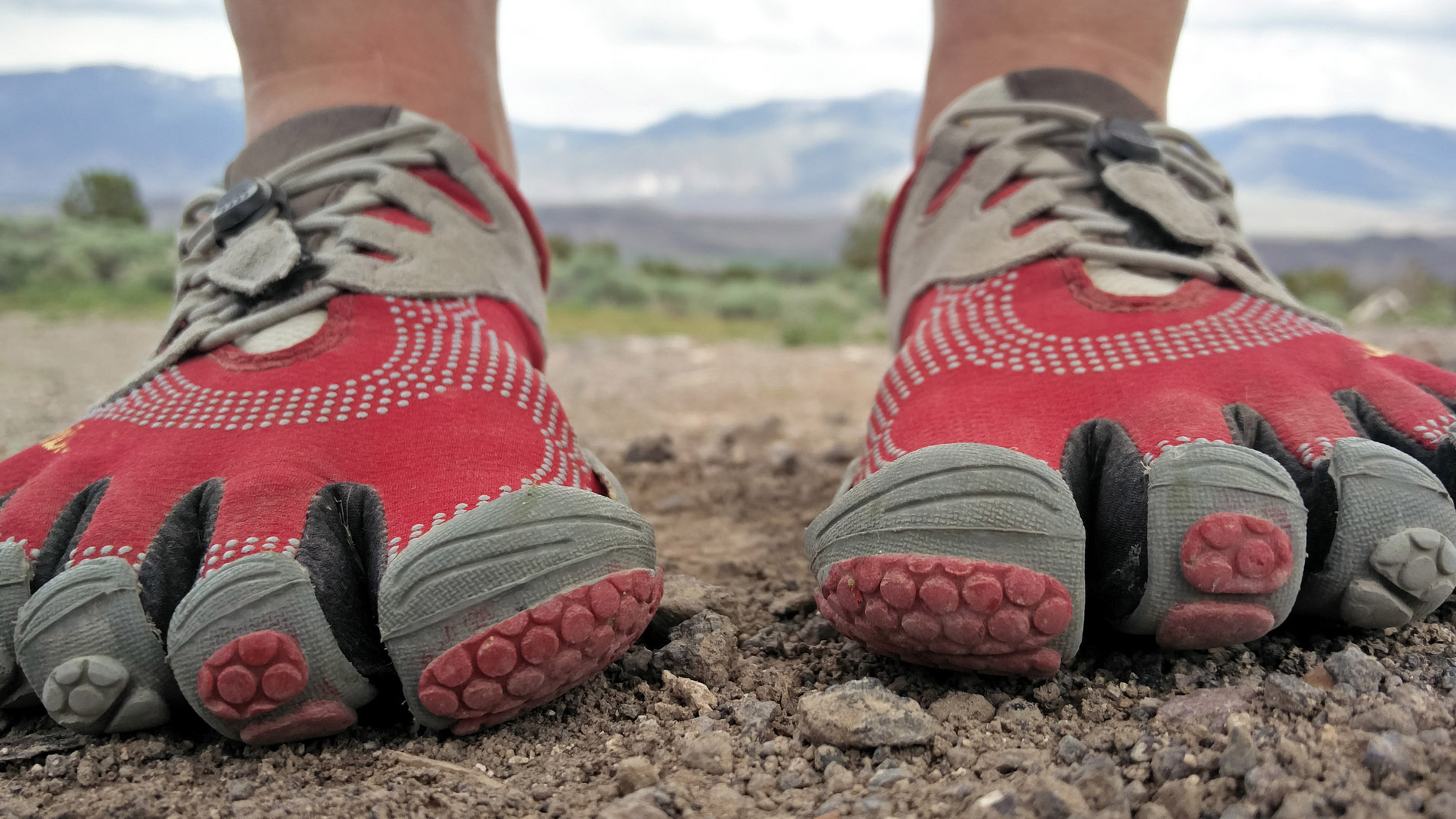
Running shoes
Your shoes are the most important piece of running gear you'll own, so it's worth familiarizing yourself with some of the jargon so you understand what everything means when browsing through stores.
Trail running shoes: shoes for off-road running, often with a hard soleplate to protect your foot from rocks, and lugs for grip in slippery mud (see the best trail running shoes).
Road running shoes: shoes designed for running on hard surfaces. They can have lots of padding or virtually none, but have mostly smooth soles that don't provide purchase in slippery mud.
Road to trail running shoes: a hybrid shoe designed to cover all terrains. More cushioned than a trail shoe, but with small lugs to provide grip when running off-road (see the best road to trail running shoes).
Barefoot running shoes: running shoes with minimal padding and flexible soles, which mostly just protect your feet from abrasions (see the best barefoot running shoes).
Heel drop: the difference in height between the heel and toe of the shoe.
Upper: the top part of a shoe, usually made from breathable fabric and secured with laces.
Insole: the part of the shoe that's in contact with the sole of your foot.
Midsole: the part of the shoe between the insole and outsole, usually made of foam. The type, quantity, and shape of foam will determine the amount of cushioning the shoe provides.
Outsole: the part of the shoe that makes contact with the ground, and is typically made of rubber.
Sole unit: the midsole and outsole together.
Collar: The part of the upper that sits around your ankle, usually cushioned.
Pronation
This is something you'll come across when choosing running shoes. It's the way your foot rolls during running, and there are three types.
Neutral pronation: your foot lands on the outside of the heel, then rolls inward slightly (about 15%) before pushing off evenly from the forefoot.
Overpronation: your foot lands on the outside of the heel, then rolls inward a lot so you end up pushing off with your big toe.
Underpronation/supination: your foot rolls outward from the ankle, putting pressure on your outer toes.
Orthotics: inserts that go inside your shoes, which aim to control the movement of your foot. They can be bought off the shelf, or be custom made after an appointment with a podiatrist.
Podiatrist: a person who specializes in care for, diagnosis of, and treatment of problems related to your feet and ankles. They are medically trained and qualified professionals, and are classed as doctors in some countries but not others (such as the UK).
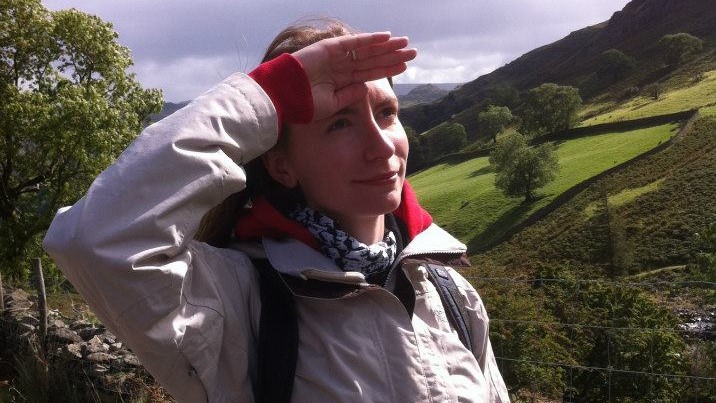
Cat is the editor of Advnture, She’s been a journalist for 15 years, and was fitness and wellbeing editor on TechRadar before joining the Advnture team in 2022. She’s a UK Athletics qualified run leader, and in her spare time enjoys nothing more than lacing up her shoes and hitting the roads and trails (the muddier, the better), usually wearing at least two sports watches.
